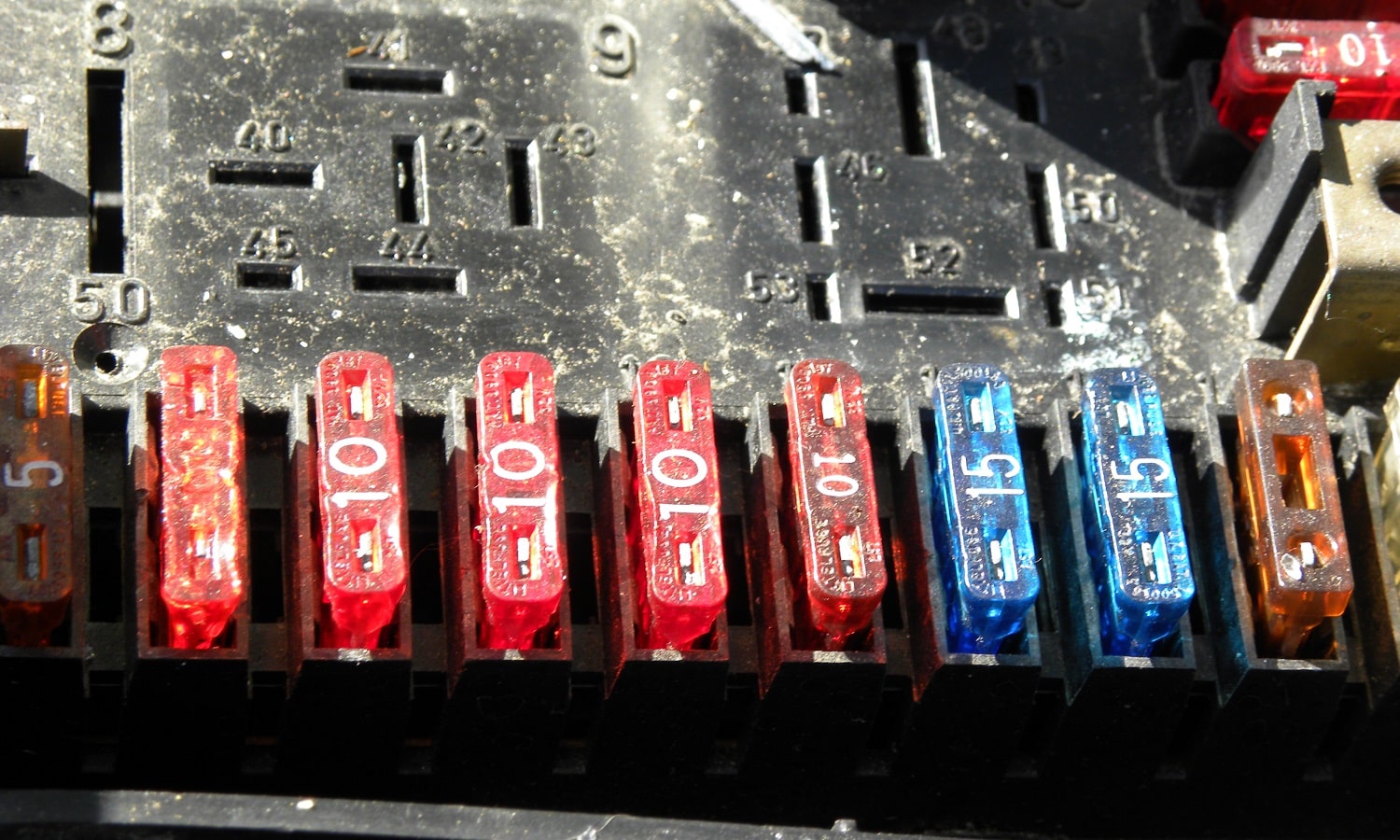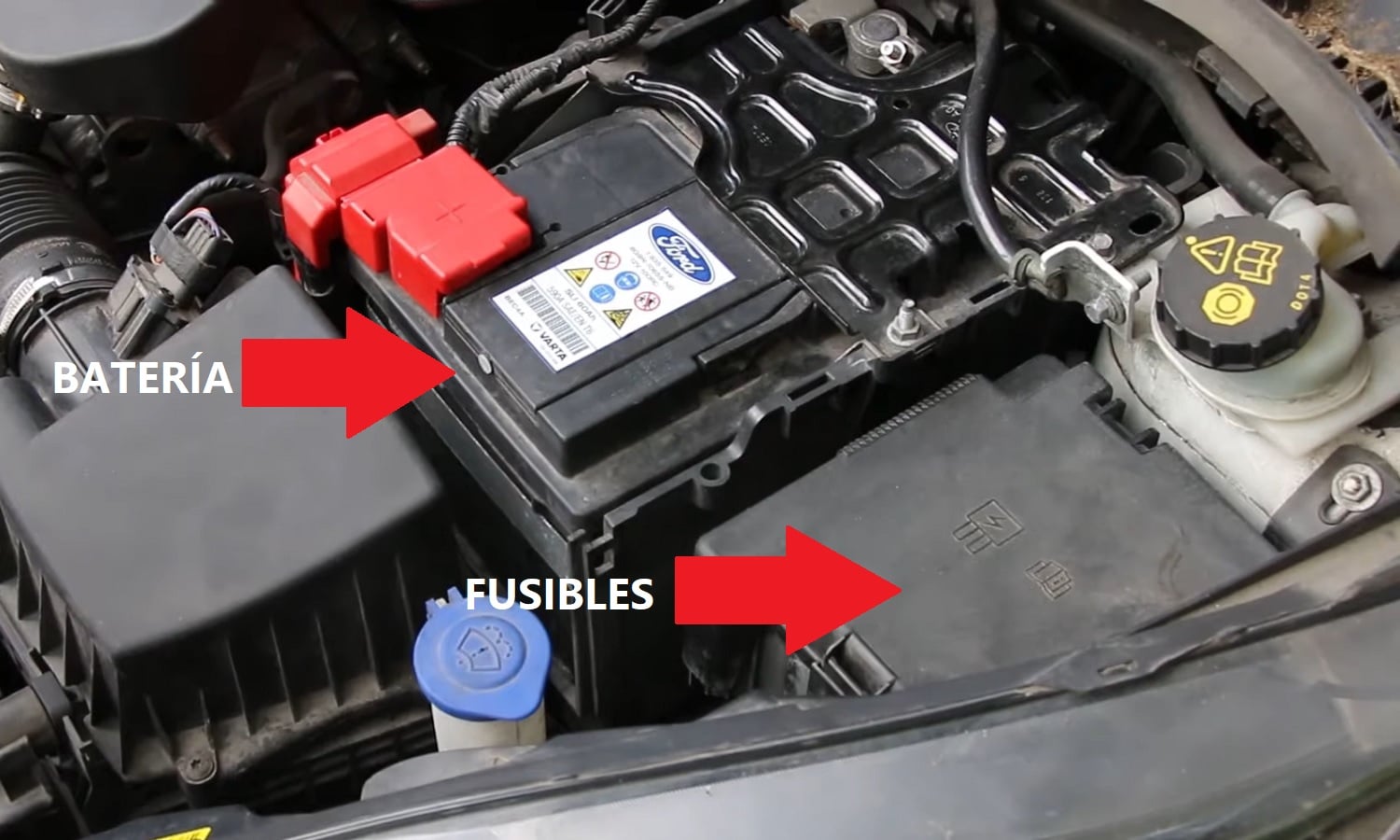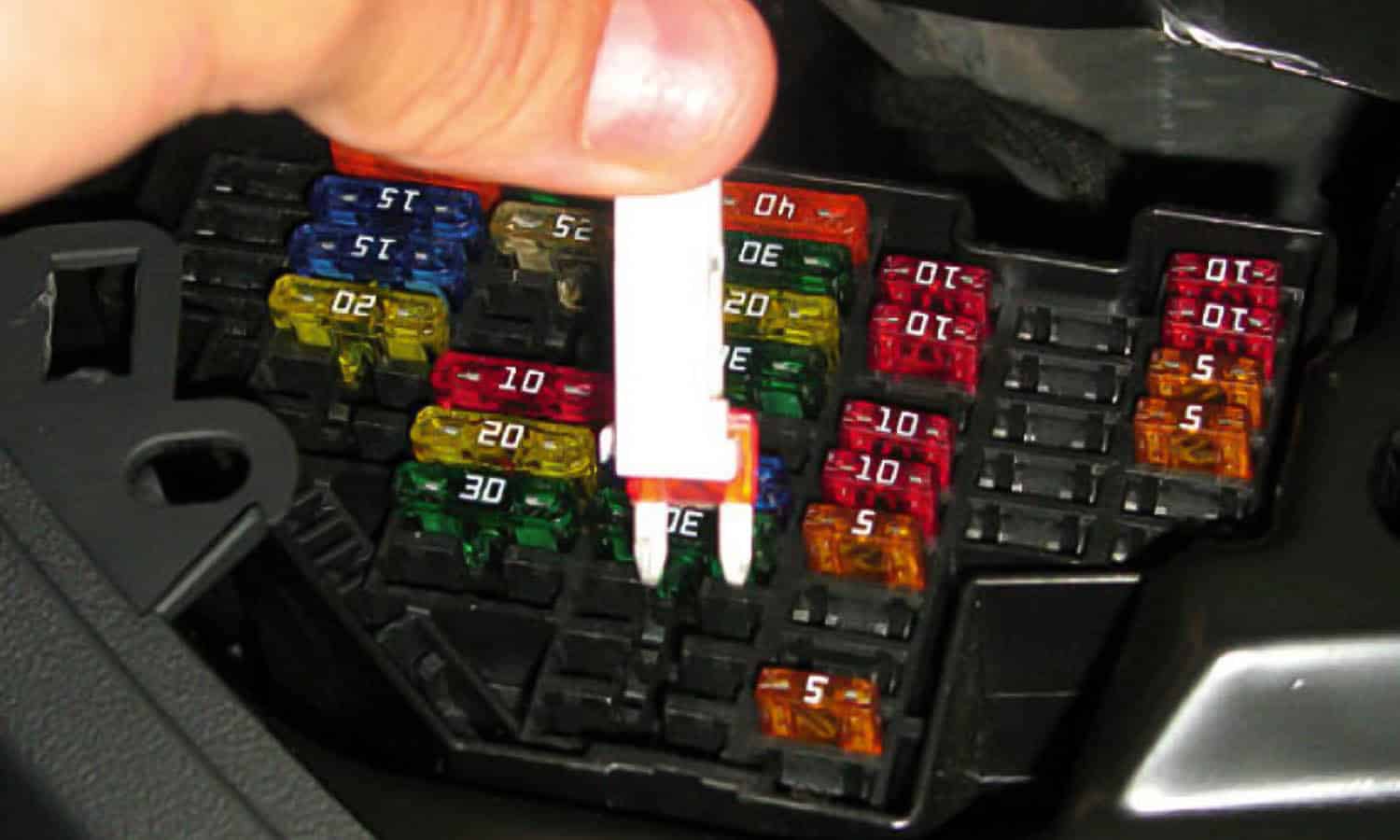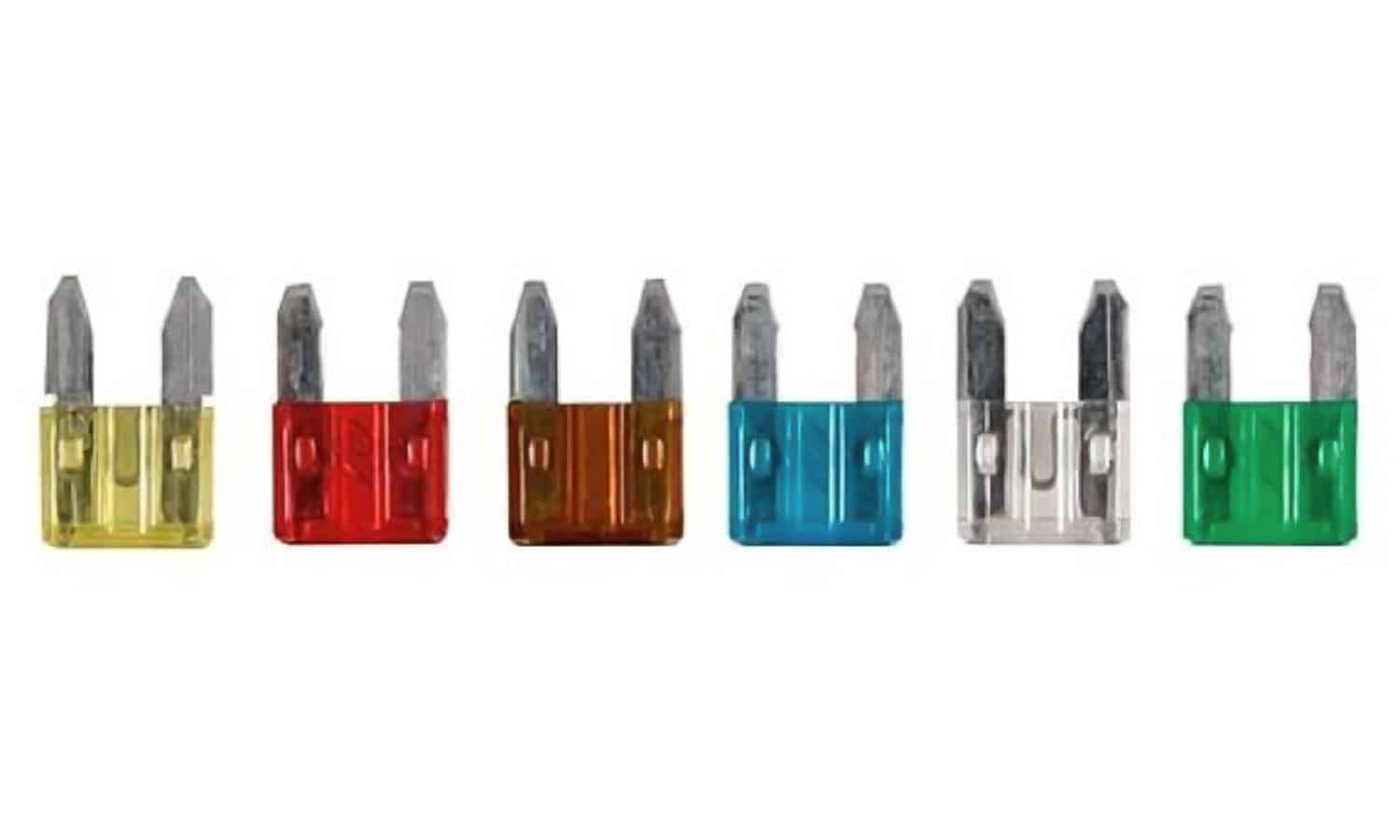
The car fuses They are essential to protect your electrical components. Therefore, a driver must know where are they, how to check them y how to replace them if required.
Of course, all this taking into account that if a fuse blows, the most normal thing is that there is an electrical problem somewhere in the circuit. So, checking the fuses is more useful to know in which system of the car the problem is. Replacing them usually serves to get out of trouble, finish a trip and, why not, try your luck to see if it has been a specific problem.
In other words, the fuses protect, but also they are the sneak of a breakdown. This is so because each electrical component of the car is protected by a fuse. In the manual or the cover of the fuses it is indicated which element each one is responsible for. For example, we can talk about the lights, the radio, the security systems or even the Ignition system or ESP. This prevents an electrical problem from causing further damage and even causing a fire.
What is a fuse?

Un fuse it is a component that contains a link that will melt if too much current is passed through it. Its main function is to protect electrical wiring and other devices by interrupting the flow of electricity in the event of an overload. A fuse is a safety measure designed to protect against electrical fires, short circuits, and other hazards. In short, a very cheap and basic element but that can save the vehicle from much more expensive breakdowns.
The way it works is very simple. a fuse contains a small piece of wire that melts if too much current passes through it. This action stops the flow of electricity immediately. In other words, the circuit inside the fuse is turned on when the power is turned on. This circuit will continue to conduct electricity until the circuit breaker shuts off the power. If too much current flows through a circuit, the fuse will heat up, melting the wire that connects its two terminals. The blown fuse can no longer carry current and must be replaced...
where are the car fuses

Normally, main fuses are located in two or three zones of our vehicle
- First of all, we can find a fuse box next to the car battery, normally in the engine compartment.
- The second most frequent place is on the dashboard, either near the steering wheel or behind the glove box.
- The third is in the center tunnel, behind some trim or, in vintage cars, behind the ashtray. In these cases some of these parts will have to be uncoupled to get to them.
- The fourth and therefore the least common is in the trunk.
However, there are many more fuses in the car that are not in the fuse boxes. On average, the cables and other electrical components of a car add up to 1 km on average. Therefore, other fuses are required to protect these circuits in various parts of the car. To locate them, the car workshop manual is required.. In any case, the ones in the boxes are the most important and that is why the manufacturers put them closer at hand.
How to check car fuses
Now, there are several ways to check car fuses: pull them out and inspect them visually, with a test lead, or with a multimeter:
- Visual inspection: you have to take out the fuse and see if the resistance inside it has blown or not. It is a sheet or thread that melts when too much current (Amps) passes.
- with a probe: If the fuse has 2 exposed metal surfaces to use a test lead you will not have to remove it. The crocodile clip is placed on some metal part of the body to make ground and the tip on these metal surfaces of the fuse. If it lights up at both, the fuse is good.
- with a multimeter: the fuse is removed, the multimeter is set to continuity mode and each test lead is placed on the two metal blades of the fuse. If the multimeter beeps it's fine, if not it's blown. If you want to quickly learn how to use a multimeter take a look at this video:
How to change a car fuse
In case one of the fuses is blown, it can be tested at replace it with a new one of the same amperage (5, 10, 15, 20…). However, this is a sign that there has been a voltage spike or short circuit somewhere. So if this keeps up, the fuse you put in will also blow. In any case, you can change them to see if the problem was specific or to try to finish a trip. The steps to follow are:
- Finds the fuses as indicated in the previous section
- Pulls out the fuse with clamp or clip which usually comes with the spare fuses or in your own car. Be careful because not all fuse kits come with this little tool, better get one that brings it. Otherwise you may not be able to remove the fuse.
- Put one of the same size, color and numbering as the one you extracted. This is very important to avoid electrical problems.
- Do not forget close the lid of the fuses and you are done.

If the new fuse it melts again, the origin of the electrical problem will be a different one. That is there is something in the car that causes a short circuit or a power surge which blows the fuse.
Types of fuses
The ones we find most frequently in car fuse boxes are the ones we can see in the photos in this article (blade type). However, we can also find other types of fuses depending on the vehicle and the facility they have to protect. For example, others somewhat less frequent are those of tooth type, but there are cars that protect more powerful circuits with them.
However, other types of fuses can also be found outside the fuse box, more directly protecting some components. This is the case of link type fuses, which go to the end of some cables and are shaped like a washer to be anchored. With them it is possible to disconnect said cable instead of melting due to an intensity peak.
They can also be found cylinder type fuses in cars. Although this is rare today. They are the ones that have a cylindrical shape and, sometimes, their transparent body allows you to see if the thread inside has melted or not.

What do the colors of the fuses mean?
If you look closely, there are fuses of many colors, indicating the amperage that they support For example, a blade-type car fuse that is yellow in color supports an intensity of 20 amps, while a red one has a lower intensity, 10 amps.
You will see that other types of fuses may have other colors. In any case, there is no possible confusion about it, because they are or are not differentiated by colors, they also have inscribed the number of amps they support. Usually at the top.
car fuse price
The price of the fuses is very economical. For less than 5 euros you can have several assortments that will come in handy in case one of your car fails. In any case, you should make sure that it includes a clip to remove the fuses from your car. If not, you may be left with the new fuses in your hands without being able to put them in.
Since they are so cheap we do not recommend that you skimp and buy any kit of dubious origin in a "Chinese" store. Otherwise you can cause a fire in the car. Take a good look and make sure they are of good quality. those of Jorest, Conpro or Rovtop they are good options. Just make sure they have good ratings and comments.
Hello I have a daihatsu apllause and none of the glass lifters work for me check the fuses and they are fine I tried my motors with a 12 vol source and they work what would be the problem